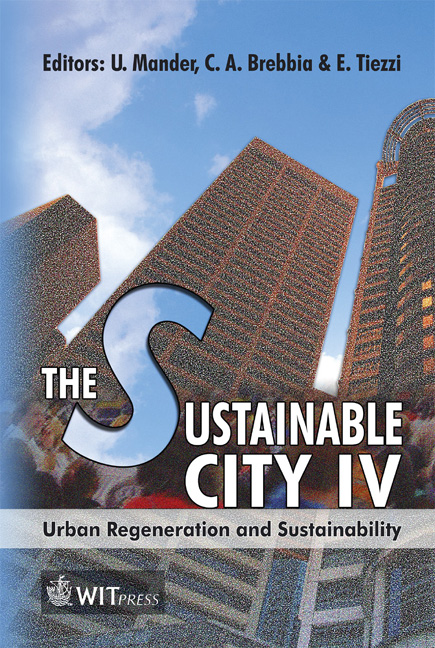Analysis Of Transport Modes In The Urban Environment: An Application For A Sustainable Mobility System
Price
Free (open access)
Transaction
Volume
93
Pages
9
Published
2006
Size
270 kb
Paper DOI
10.2495/SC060611
Copyright
WIT Press
Author(s)
F. M. M. Cirianni & G. Leonardi
Abstract
The paper intends to analyze transport modes in the urban environment, confronting the experience in different settings, urban and suburban, in cities of different sizes. The process introduced aims to improve the quality of life and access for more sustainable patterns of development, while at the same time not harming the urban mobility, proposing a model that can be applied to the different urban areas. The high costs of construction of additional road space, and the consideration that a grater offer of road space is an impulse for a greater demand of private car traffic, leads the planning process in the direction of using existing road space more efficiently, by using traffic control mechanisms, and shifting demand to alternative modes. The spreading of heavy traffic using unsuitable roads has led to the increase of the risks for public health and safety, being the levels of pollution to be dangerously high and the pedestrian mobility to be strongly restricted. The actions discussed in the paper are parking policies, which aim to redistribute on and off road parking, discouraging parking in what is the central area by means of charging policies and the institution of Controlled Traffic Zones, and by doing so shifting long term parking to fringe areas. A key factor of the success of the proposed parking policy is the institution of pedestrian routes promoting walking and cycling. The planning of the Transport System includes a mix of measures designed to encourage people to use public transport (\“pull” measures) and, where appropriate, measures to reduce the use of private cars (\“push” measures). Push-measures can be divided into financial instruments, and technical and regulatory constraints. In the paper an application to study areas is presented, describing the scenario before the adoption of the proposed policies, and after the application at the date, presenting some results in comparison. The government of cities requires a policy for traffic management, and thus it implies, among the other traffic control strategies, adequate parking policies. Traffic and transport related activities and infrastructures can affect users and non users of the system alike, as in the case of the occupation of public spaces, accidents, noise and air pollution, and congestion of the road network (i.e. transport externalities). Keywords: traffic, environment, parking, pedestrian.
Keywords
traffic, environment, parking, pedestrian.





